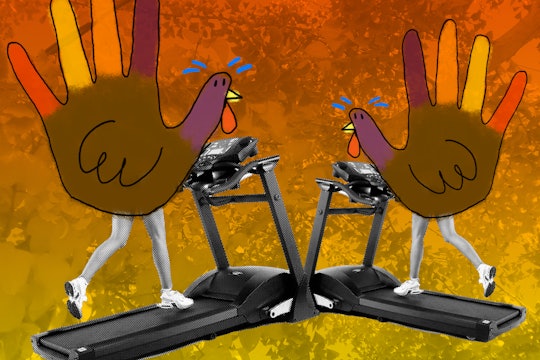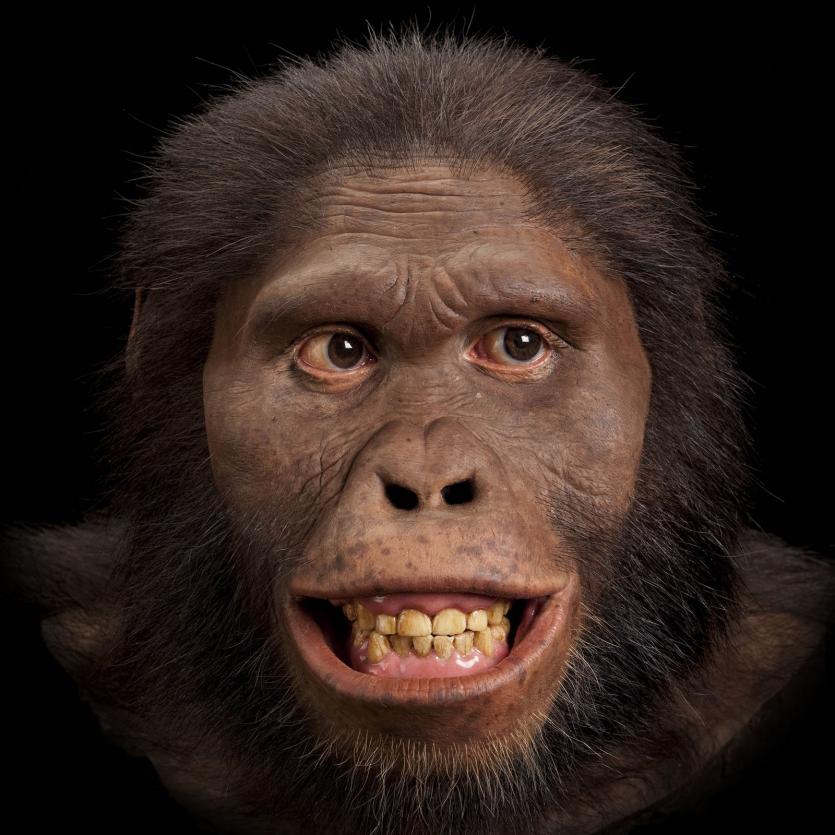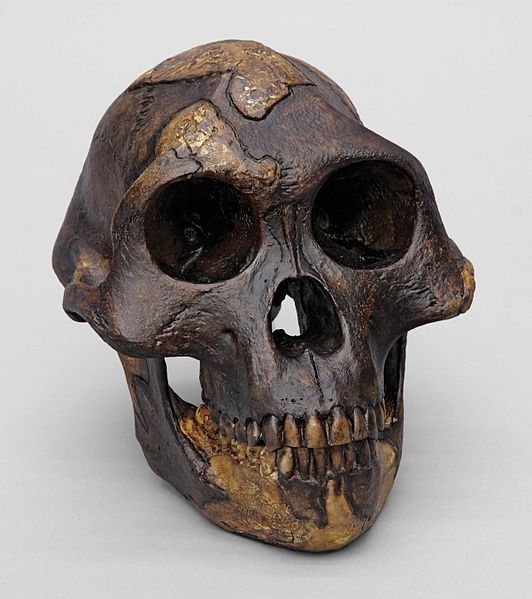
Illustration by Allan Lasser
Turkeys on treadmills are helping anthropologists test the fossil record
Walk like a person, talk like a turkey
Paleoanthropologists have historically been good at telling stories –some true, some later shown to be false – about how our ancestors lived. It's a tradition that dates back at least to the 1950s and Raymond Dart (the discoverer of the Taung Child fossil in 1924), who wrote that the broken bones he found at several South African fossil sites meant that Australopithecus africanus was proficient at using animal teeth, horns, and bones as tools and even as weapons.
Dart's stories about predatory, blood-thirsty australopithecines were more the product of an intellectual tradition than a careful consideration of alternative explanations for the available evidence. That tradition, proposed by Charles Darwin, saw the use of weapons as inevitable once hominins started walking upright and lost the large canines that characterize a number of other primates.

TFW a human relative accuses you of murder
Sculpture by John Gurche via Smithsonian Institution
Anthropologists know now that Dart's colorful interpretations of australopithecine behavior were wrong (and, indeed, many of his colleagues were skeptical of his hypothesis at the time). The animal bones found at those fossil sites were likely an accident of taphonomy, the science of what happens to an organism on its way to fossilization.
Decades later, one of the main challenges in the field remains how to move beyond telling stories and into testing hypotheses using a fossil record of our evolutionary past that is far from complete, forcing researchers to depend on scattered bone fragments. For one team of researchers, led by Ian Wallace, a postdoc in the Department of Human Evolutionary Biology at Harvard University, the path toward testing hypotheses and away from telling stories lay in that stalwart of the Thanksgiving table: the turkey.
.jpg)
The sign says it all
Anthropologists previously assumed that we could tell how physically active our fossil relatives were based on how the muscle attachment locations (called entheses) on their skeletons look: bigger attachments, they hypothesized, equal more physical activity. The relationship seemed logical; variation was present in enthesis size, shape, and robusticity both between and within species in patterns that made intuitive sense. But past researchers had a problem when it came to actually validating this idea; it's hard to do this kind of controlled experiment in people.
Walk like a person, talk like a turkey
Enter the turkey. Turkeys and humans are both bipedal, and the physics of their gaits are relatively similar. So Wallace and his team decided to use turkeys to test the classic hypothesis about the effects of physical activity on muscle attachments. They microCT scanned the bones of turkeys that had been exercised on treadmills – bones previously used for an unrelated biomechanics project looking at turkey movement to help build better human prosthetics – and compared their bones to those of less-active lab turkeys
It turned out, according to the study the team published in June, that the long-held assumption about the relationship between muscle attachments and exercise wasn't correct: the treadmill turkeys didn't have larger muscle attachments than the lab turkeys. But they did have denser bone in their knee joints than the sedentary turkeys.
These results fit with the growing body of anthropological, experimental research on bone structure. The only two other studies that have tried to link controlled exercise to muscle attachment appearance – one using climbing mice and the other featuring backpack-wearing sheep on treadmills – found similar results: that attachment size didn't change, but exercised bones were denser than sedentary ones.
Bone is dynamic; it changes during life depending on how you use it, a concept anthropologists call Wolff's Law. Spongy bone (found at the ends of long bones, in the pelvis, and in the vertebrae) is particularly adaptable. Numerous studies, including Wallace's, have demonstrated that physical activity can affect its density and the alignment of all the tiny bony rods and plates that make up spongy bone.

Lucy
Wikimedia
While there's still a lot to learn about the different variables that can affect spongy bone growth and remodeling – like the underlying genetic pathways, and the influence of sex and hormones on bone deposition and resorption – the current evidence seems to favor analyses of the internal architecture of bone over external muscle markings for trying to reconstruct the behavior of our ancestors.
These types of innovative, controlled experiments are needed now to move the field of paleoanthropology away from a dependence on rare and lucky fossil finds – even the famous Lucy specimen is only 30 to 40 percent complete. And with ever-improving technology and methods (and a few turkeys willing to trot), anthropologists can now dig more deeply into human prehistory than ever before.
